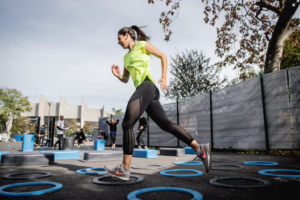Highly Processed Foods Could Be Addictive As Tobacco, Study Says
You might have heard the notion that processed foods are unhealthy, but that should
You might have heard the notion that processed foods are unhealthy, but that should
Often skin cancer is associated with exposure to ultraviolet light, but it turns out

Although most parents are concerned about the impact video games can have on their

A new research has shown that sleeping for less than five hours per night

A new study has established that strict parenting can lead to depression in children.
A new study has found that smoking cigarettes can block oestrogen production in women’s
Humans often sleep because they get to sleep, according to sleep researcher William Dement.
You may have heard that eating a balanced diet can reduce the risk for
According to new research, having dinner regularly as a family could be the key
According to the latest research, practicing mind relaxation techniques such as medication in older
Maintaining a healthy lifestyle is sometimes challenging, particularly if you’re constantly exposed to unhealthy

Exercise has numerous advantageous health effects in addition to aiding in weight loss or
The majority of Seniors may have a high-protein diet by consuming meat, fish, dairy products, beans and legumes, eggs, and reasonably high-protein plants, such as asparagus and spinach.
High-Protein diets are trending this holiday season as Seniors try to improve their waistlines.
Seniors who are contemplating a High-Protein diet often choose to restrict their carbohydrate consumption, which may mean minimizing their consumption of highly processed products, bread and other baked goods, sugar, as well as white pasta and rice. Some high-protein diet programs are not advisable for senior citizens for long periods of time since they exclude foods containing critical vitamins, minerals, and fiber.
High-Protein diet plans typically focus on eating a combination of lean animal proteins and plant-based proteins for optimal results. Balance is essential when selecting a diet of this sort. Although most high-carb foods are prohibited for a brief period of time, this should aid in weight reduction and reduce bloating. High-Protein diets, like all other diets, are only successful when combined with daily activity, even if it’s simply a brisk stroll or 20-minute step workout. Compare these protein-rich diets, carefully designed to help you lose weight.
The majority of Seniors may have a high-protein diet by consuming meat, fish, dairy products, beans and legumes, eggs, and reasonably high-protein plants, such as asparagus and spinach.
High-Protein diets are trending this holiday season as Seniors try to improve their waistlines.
Seniors who are contemplating a High-Protein diet often choose to restrict their carbohydrate consumption, which may mean minimizing their consumption of highly processed products, bread and other baked goods, sugar, as well as white pasta and rice. Some high-protein diet programs are not advisable for senior citizens for long periods of time since they exclude foods containing critical vitamins, minerals, and fiber.
High-Protein diet plans typically focus on eating a combination of lean animal proteins and plant-based proteins for optimal results. Balance is essential when selecting a diet of this sort. Although most high-carb foods are prohibited for a brief period of time, this should aid in weight reduction and reduce bloating. High-Protein diets, like all other diets, are only successful when combined with daily activity, even if it’s simply a brisk stroll or 20-minute step workout. Compare these protein-rich diets, carefully designed to help you lose weight.

Amino acids are the smallest components that make up proteins. Nine of the 22 amino acids are deemed “essential,” meaning they must be obtained from diet since the body is incapable of producing them. On the basis of their amino acid composition, certain foods give superior protein than others.
In general, animal products are termed “complete proteins” because they contain the appropriate quantities of all necessary amino acids required by the organism. Included are eggs, dairy products, pork, fish, and fowl.
Vegetable proteins do not contain sufficient quantities of each necessary amino acid, but they may be combined with other plant sources to create a complete protein. Protein-rich plant foods include beans, lentils, grains, soy, nuts, and seeds.
In a controlled trial with 12 healthy women aged 55 and older, those who followed a high-protein diet reported stronger sensations of fullness and less hunger than those who took a low-protein diet. Due to these effects on hunger and fullness, a greater protein intake often results in a natural decrease in food consumption and a slimmer waist.
Interestingly, the considerable rise in metabolic rate that occurs during protein digestion may also contribute to the satiating nature of this macro-nutrient. The digestion of protein seems to raise metabolic rate by 20–35%, compared to a 5–10% rise when digesting carbohydrates or fat. Several studies have shown that persons who consume high-protein diets end up burning more calories for several hours after a meal, up to twice as much as those who consume a high-carbohydrate diet.
A high-protein diet is simple to follow and may be tailored to your dietary tastes and health objectives. For instance, a low-carb, high-protein diet may be necessary to maintain blood sugar management.
Seniors may have a protein-rich, dairy-free diet by avoiding milk products. Even a vegetarian diet may be rich in protein if it consists of eggs, dairy products, and an abundance of legumes and other plant proteins. Following these pointers for best results:
• Keep a food diary: Start a food diary using an app that provides protein values for thousands of foods to set your own calorie goals.
• Calculate protein needs: To calculate your protein needs, multiply your weight in pounds by 0.6–0.75 grams, or your weight in kilograms by 1.2–1.6 grams.
• Eat at least 25–30 grams of protein at meals: Research has shown that consuming a minimum of 25 grams of protein at meals may promote weight loss.
• Include both animal and plant proteins in your diet: Eating a combination of both types helps make your diet more nutritious overall.
• Choose high-quality protein sources: Focus on fresh meats, eggs, dairy and other proteins, rather than processed meats like bacon and lunch meats.
• Consume well-balanced meals: Balance high-protein foods with vegetables, fruits and other plant foods at every meal.
The example 3 day plan below provides about 100 grams of protein per day. However, you can adjust the portions and number of days to meet your needs.
Day 1
• Breakfast: 3 eggs, 1 slice whole grain toast with almond butter and a pear.
• Lunch: Fresh Avocado and Cottage Cheese Salad and an orange.
• Dinner: 6 ounces (170 g) steak, sweet potato and grilled zucchini.
Day 2
• Breakfast: Smoothie made with 1 scoop protein powder, 1 cup coconut milk and strawberries.
• Lunch: 4 ounces (114 g) canned salmon, mixed greens, olive oil and vinegar and an apple.
• Dinner: 4 ounces (114 g) grilled chicken with quinoa and Brussels sprouts.
Day 3
• Breakfast: Oatmeal, one cup of plain Greek yogurt with 1/4 cup chopped pecans.
• Lunch: 4 ounces (114 g) chicken mixed with avocado, red bell pepper and a peach.
• Dinner: All Meat Veggie Chili and brown rice.
| Cookie | Duration | Description |
|---|---|---|
| cookielawinfo-checbox-analytics | 11 months | This cookie is set by GDPR Cookie Consent plugin. The cookie is used to store the user consent for the cookies in the category "Analytics". |
| cookielawinfo-checbox-functional | 11 months | The cookie is set by GDPR cookie consent to record the user consent for the cookies in the category "Functional". |
| cookielawinfo-checbox-others | 11 months | This cookie is set by GDPR Cookie Consent plugin. The cookie is used to store the user consent for the cookies in the category "Other. |
| cookielawinfo-checkbox-advertisement | 1 year | The cookie is set by GDPR cookie consent to record the user consent for the cookies in the category "Advertisement". |
| cookielawinfo-checkbox-necessary | 11 months | This cookie is set by GDPR Cookie Consent plugin. The cookies is used to store the user consent for the cookies in the category "Necessary". |
| cookielawinfo-checkbox-performance | 11 months | This cookie is set by GDPR Cookie Consent plugin. The cookie is used to store the user consent for the cookies in the category "Performance". |
| crumb | This cookie is set by websites that uses SquareSpace platform. The cookie is used to prevent cross-site request forgery (CSRF). | |
| elementor | never | This cookie is used by the website's WordPress theme. It allows the website owner to implement or change the website's content in real-time. |
| gdpr_status | 6 months 2 days | This cookie is set by the provider Media.net. This cookie is used to check the status whether the user has accepted the cookie consent box. It also helps in not showing the cookie consent box upon re-entry to the website. |
| viewed_cookie_policy | 11 months | The cookie is set by the GDPR Cookie Consent plugin and is used to store whether or not user has consented to the use of cookies. It does not store any personal data. |
| XSRF-TOKEN | session | The cookie is set by Wix website building platform on Wix website. The cookie is used for security purposes. |
| Cookie | Duration | Description |
|---|---|---|
| __gads | 1 year 24 days | This cookie is set by Google and stored under the name dounleclick.com. This cookie is used to track how many times users see a particular advert which helps in measuring the success of the campaign and calculate the revenue generated by the campaign. These cookies can only be read from the domain that it is set on so it will not track any data while browsing through another sites. |
| _ga | 2 years | This cookie is installed by Google Analytics. The cookie is used to calculate visitor, session, campaign data and keep track of site usage for the site's analytics report. The cookies store information anonymously and assign a randomly generated number to identify unique visitors. |
| _ga_XZV5DHF9VD | 2 years | This cookie is installed by Google Analytics. |
| _gat_gtag_UA_71463705_9 | 1 minute | This cookie is set by Google and is used to distinguish users. |
| _gat_UA-71463705-9 | 1 minute | This is a pattern type cookie set by Google Analytics, where the pattern element on the name contains the unique identity number of the account or website it relates to. It appears to be a variation of the _gat cookie which is used to limit the amount of data recorded by Google on high traffic volume websites. |
| _gcl_au | 3 months | This cookie is used by Google Analytics to understand user interaction with the website. |
| _gid | 1 day | This cookie is installed by Google Analytics. The cookie is used to store information of how visitors use a website and helps in creating an analytics report of how the website is doing. The data collected including the number visitors, the source where they have come from, and the pages visted in an anonymous form. |
| CONSENT | 16 years 5 months 20 days 12 hours | These cookies are set via embedded youtube-videos. They register anonymous statistical data on for example how many times the video is displayed and what settings are used for playback.No sensitive data is collected unless you log in to your google account, in that case your choices are linked with your account, for example if you click “like” on a video. |
| session_depth | 30 minutes | This cookie is used to store the number of pages a vistor visits in a session on the website. |
| Cookie | Duration | Description |
|---|---|---|
| _fbp | 3 months | This cookie is set by Facebook to deliver advertisement when they are on Facebook or a digital platform powered by Facebook advertising after visiting this website. |
| B | 1 year | This Cookie is used by Yahoo to provide ads, contents or analytics. |
| DSID | 1 hour | This cookie is setup by doubleclick.net. This cookie is used by Google to make advertising more engaging to users and are stored under doubleclick.net. It contains an encrypted unique ID. |
| fr | 3 months | The cookie is set by Facebook to show relevant advertisments to the users and measure and improve the advertisements. The cookie also tracks the behavior of the user across the web on sites that have Facebook pixel or Facebook social plugin. |
| id | 1 year | The main purpose of this cookie is targeting and advertising. It is used to create a profile of the user's interest and to show relevant ads on their site. This Cookie is set by DoubleClick which is owned by Google. |
| IDE | 1 year 24 days | Used by Google DoubleClick and stores information about how the user uses the website and any other advertisement before visiting the website. This is used to present users with ads that are relevant to them according to the user profile. |
| test_cookie | 15 minutes | This cookie is set by doubleclick.net. The purpose of the cookie is to determine if the user's browser supports cookies. |
| uuid2 | 3 months | This cookies is set by AppNexus. The cookies stores information that helps in distinguishing between devices and browsers. This information us used to select advertisements served by the platform and assess the performance of the advertisement and attribute payment for those advertisements. |
| VISITOR_INFO1_LIVE | 5 months 27 days | This cookie is set by Youtube. Used to track the information of the embedded YouTube videos on a website. |
| YSC | session | This cookies is set by Youtube and is used to track the views of embedded videos. |
| Cookie | Duration | Description |
|---|---|---|
| __ib2pgses_1186_a | session | No description |
| __ib2pgses_1198_a | session | No description |
| __ib2pgses_1221_a | session | No description |
| __ib2pgses_1253_a | session | No description |
| __ib2pgses_1283_a | session | No description |
| __ib2pgses_1476_a | session | No description |
| __ib2vid | 1 month | No description available. |
| _app_session | 1 month | No description available. |
| _gfpc | session | No description available. |
| A3 | 1 year | No description |
| akacd_widgets_routing | past | No description available. |
| ans3 | 2 days | No description |
| check | 1 day | No description available. |
| GoogleAdServingTest | session | No description |
| L-y13n2 | 1 day | No description |
| outbrain_cid_fetch | 5 minutes | No description available. |
| owner_token | 1 day | No description available. |
| PP-y13n2 | 1 hour | No description |
| r | 7 days | No description |
| recs_3e571bd1fd579a0c57cc16aa155ba54b | past | No description |
| RL-y13n2 | 1 day | No description |
| thirdparty | 1 hour | No description available. |
| yt-remote-connected-devices | never | No description available. |
| yt-remote-device-id | never | No description available. |